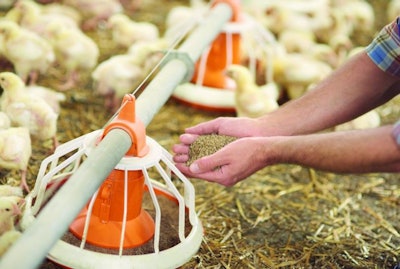
If broiler and egg producers think that sustainability is merely a passing trend, they should think again. The importance of sustainable food chains was one the key findings of a global survey across close to 19,000 consumers in 28 countries conducted in 2020 by think tank the IBM Institute for Business Value.
For food and beverage purchases, the survey revealed, more consumers based their buying decisions on criteria that aligned with their values and lifestyle than on getting the best value for money.
The survey found that about 57% of consumers were willing to modify their purchasing habits to help reduce their environmental impact and that 70% were even willing to pay a premium – up to 35% – for sustainable and environmentally responsible brands.
With sustainability becoming ever-more important, many poultry and egg companies have committed to carbon neutral production. For others, there is still work to be done, and there are many areas where producers can improve their sustainability.
The importance of feed
Carbon neutral production will clearly require a multipronged approach to offset feeds’ impact on the environment, responsible for between 74.5% (eggs) and 86.7% (broilers) of the total greenhouse gas (GHG) emissions of the sector.
Feed formulation has traditionally been based on the concept of least-cost formulation, meeting birds’ nutritional needs at the lowest cost, and switching ingredients and their incorporation level based on market prices. However, from an environmental impact standpoint, not all feed ingredients are created equal.
For instance, the GHG emissions, expressed in kilograms of CO2 equivalent, for a metric ton of wheat are lower than those of corn and, sequentially, sunflower seed and soybeans.
With this in mind, nutritionists should integrate feed ingredients’ environmental impact into their formulation design to create a new, least-cost and least-impact approach to meeting birds’ needs.
The issue, however, is not as simple as it may at first seem as the environmental impact of the same feed ingredient varies depending on origin. For instance, the emissions allocated to soybean production in Brazil vary more than 220-fold depending on the level of deforestation.
Feed additives under-recognized
High feed quality and the use of specific additives, such as prebiotics, probiotics and enzymes, impact a bird’s gut health, contributing to optimal feed absorption and utilization. While the use of enzymes in poultry rations to increase productivity is now well accepted, their effects on reducing feed’s environmental impact is less recognized.
In a recent study conducted in Brazil, adding protease to broiler rations not only improved productivity but also reduced GHG emissions by 1-3%, freshwater eutrophication by 1-2% and the incidence of human respiratory disease due to fine particles in the air by 2-3%.
Sharing best practices
Productivity varies considerably between countries, between producers and even from farm to farm within the same company. For instance, a global egg production survey showed a 28% variation between the highest and lowest total number of eggs produced during a 60-week production cycle.
Adopting best management practices, however, can reduce this disparity.
The Food and Agriculture Organization terms reducing this variation between farms and lifting national productivity towards that of the best performing farms as "bridging the gap."
The application of best practices, including for disease prevention and control, ventilation, and animal welfare, will have a significant impact on the poultry sector’s overall sustainability. In Canada, for example, it was estimated that the adoption of the best current and known practices by all egg producers would reduce GHG emissions by 43%.
The role of producer organizations, nutritionists and international non-governmental organizations, such as the education bodies the World Veterinary Education in Production Animal Health and World’s Poultry Science Association, is key to sharing up-to-date production information and accelerating the adoption of new practices by a sector that is often change-adverse.
Manure an immediate challenge
Manure management, accounting for between 6.4% (broilers) and 20% (layers) of the poultry sector’s total GHG emissions, is under producers’ direct control and should be an immediate focus. Limiting the level of organic matter in feces will not only imply that birds have absorbed more nutrients but will also provide fewer opportunities for anaerobic microorganisms to proliferate, a major contribution to manure’s GHG.
In general, reducing manure’s nitrogen concentration, preventing the formation of anaerobic conditions during storage and reducing the entry of degradable carbon into the manure are effective strategies to reduce GHG emissions from fields where manure is applied.
New housing design
Housing design should reflect the needs of a more sustainable poultry sector. It is possible to build houses that are net zero, which implies that the amount of energy used in the house on an annual basis is equal to the amount of renewable energy it generates.
By design, these poultry houses rely on structural considerations to reduce energy use, the adoption of energy efficient systems and on-site generation of renewable energy. These new houses not only significantly reduce overall energy costs, but also limit energy production’s environmental impact.

Measure and evaluate
Only after accurately evaluating production practices’ environmental impact should a decision be made as to what should be applied. As the saying goes, "you cannot improve what you do not measure."
A number of commercially available tools now allows farmers to quickly measure on farm the environmental impact of production and identify the most impactful mitigation strategies.
A carbon neutral commitment requires producers to tackle this new challenge on many fronts. However, as many of the options for mitigating poultry production’s environmental impact also have financial benefits, their adoption should be accelerated once widely known. Knowledge and best practice sharing within the sector will be key to its journey toward greater sustainability.
















